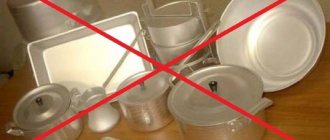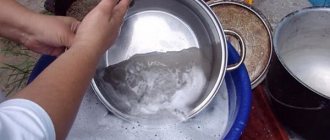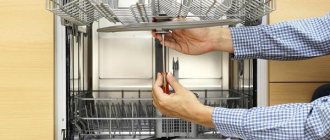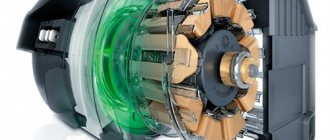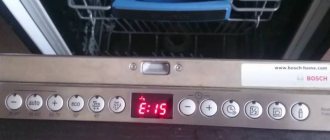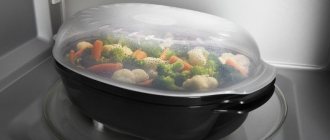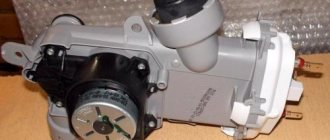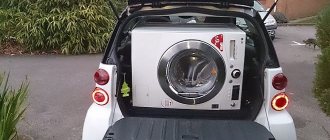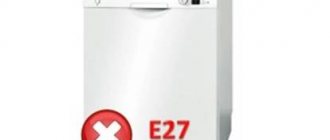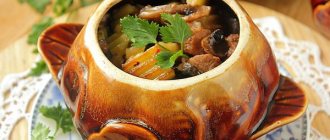It is difficult to imagine life without the convenience that a microwave oven provides. Take at least heating up any dish in a couple of minutes. More experienced users have mastered cooking and are also satisfied. Baking, boiling, heating, stewing or steaming, grilling, defrosting - it is very difficult to list all the possibilities that this reliable assistant provides.
There are very few restrictions when using a microwave oven. The main one concerns the material from which the container that can be irradiated can be made. Sometimes a microwave icon on a dish can serve as a clue, and if there isn’t one, how do you know if it can be used? After all, using the wrong material will damage the equipment or adversely affect people’s health.
Protective plastic cover to protect against splashes and moisture loss
What dishes can be used in the microwave?
Examples of labeling for microwave ovens
The general prohibition for everything that is prohibited for a microwave oven is “No metal!” Metal or metallized coating, reinforcing mesh, handles, funnels, prints or micro-inclusions of metal will cause sparks to jump inside the chamber, the magnetron will start to spark, and the equipment will fail.
The following types of containers are suitable for all microwave oven modes:
Types of dishes for microwave ovens
- Glass. Almost all types of glass trays, pans, salad bowls or heat-resistant glass forms are suitable for any microwave oven mode. Thin-walled glass is suitable only for short-term heating of liquid. They transmit radiation, food looks aesthetically pleasing, you can monitor the cooking process, it’s easy to care for, plus it’s durable (if you don’t throw it or put it hot on a cold table). Manufacturers of household appliances recommend using round or oval glassware; heating plus cooking proceeds faster and more evenly.
- Silicone. Silicone products for the kitchen, which are quickly conquering the market, have reached microwave ovens. Now on the market you can find a huge range of baking dishes made of multi-colored food grade silicone. It allows you to cook without oil, it is easy to clean, it is not afraid of the dishwasher or high temperatures, it has a non-stick property and is quite durable. It is important to buy products from trusted manufacturers, only food grade silicone.
Sample of silicone product
Plastic. Trays, containers, pallets or cups made of polymers are often used by housewives. But a microwave oven requires special plastic - heat-resistant plus suitable for microwave exposure. Otherwise, the output will be a deformed piece of plastic. There are types of plastic that can only be heated in, that is, exposed to heat for a short time, but cooking, especially with fat, is not recommended. You can find out which type of polymer is suitable for a microwave oven by the markings on the walls or bottom.
Reception of plastic containers
- Clay. This includes ceramic, earthenware, porcelain or earthenware dishes - any that contain clay, without inclusions or metal decoration. Food heats up and cooks a little worse in it, since it does not transmit microwaves well. First, the walls warm up, and only then does the food, so you need to follow all safety rules when removing it from the oven. You need to carefully ensure that there are no cracks on the surface - due to the temperature difference, such a cracked cup or plate will simply burst during heating.
- Paper. Food packaged in paper bags, envelopes, plus plastic or film - all this is suitable for use in the microwave only for heating, but not for long, a couple of minutes. Otherwise, the film will begin to melt or even catch fire.
Food in packaging that can be heated in a microwave oven
- Fabric. It is convenient to heat flour and bakery products in linen or cotton napkins.
Containers that can be used in microwave ovens have special markings that allow you to understand their purpose.
Samples of symbols on dishes
Designations on plastic utensils: explanation
For different purposes of use, you should choose a certain type of plastic with the necessary characteristics.
Labeling for food
Quite often on plastic utensils there is a symbol with the image of a glass and fork. This marking indicates that:
- the product material is non-toxic;
- the container can be used to store various food products;
- The plastic from which the dishes are made is completely safe.
If such a sign is shown crossed out, then its meaning is exactly the opposite and such a container is prohibited from being used for storing food products.
Products marked PP are made of food-grade plastic and can also be used for heating and storing food, but do not forget about the temperature markings and additional operating conditions for such containers.
Containers with the image of a crossed out glass and fork are prohibited from being used for food products.
Labeling of water containers
The liquid should be stored in a container marked HDPE or HDPE. The contents in such a container cannot be heated and you should not store excessively hot drinks either. When exposed to high temperatures, such plastic releases hazardous substances.
It is better not to buy products marked in the form of a drop in which the symbols “d2w” are written. This is an oxo-degradable type of material that is not suitable for recycling and is prone to releasing toxic substances.
Microwave cookware labeling
Not all plastic containers are suitable for heating food in a microwave oven. Microwaveable utensils must be marked with a wave symbol or a miniature microwave icon. Also, the container is additionally marked with the word “micro”.
Pay attention to cookware marked PP. It is made of polypropylene, which can withstand temperatures of +100-110 degrees and is perfect for use in the microwave.
Plastic that can be used in microwave ovens
Plastic marking
If it can be frozen or exposed to low temperatures, then there will be an image of snowflakes. The more snowflakes, the lower the temperature the material can withstand.
Marking on plastic
Plastic, its types and designations
If plastic products have a triangle of arrows with the number 6 inside and the abbreviation PS, this means that the polymer is polystyrene, which means it cannot be heated, poured hot, or used in a microwave oven!
If the designation is the number 5 plus PP, then this is the mass of polypropylene. Such containers can be used in a microwave oven, but without the use of alcohol, which as a result of a chemical reaction will release formaldehyde and phenol, which, if ingested, can lead to blindness.
The pictogram on the plastic in the form of a glass and fork means that the product tolerates high temperatures well and is intended for food products. It allows you to heat or hold food products. If such a sign is crossed out, then this indicates the opposite - non-food plastic.
Special dishes for a microwave oven have a symbol on them in the form of a microwave oven and a plate inside it.
All other types of plastics release toxic substances when heated and can be hazardous to health, especially if they are exposed to heat or microwaves.
Labeling of plastic utensils
Icons on cookware provide the user with detailed information on how to properly use a particular product.
Types and uses of plastic.
Icons indicating cooking methods
The labeling of plastic containers may also depend on the method of its use. This is often a small icon on the bottom or end.
For microwave
The marking of plastic containers, which means that the container can be used in a microwave oven, must be present on the product itself. Usually it is a miniature image of a microwave.
If the container shows a triangle of three arrows inside which the number 6 is written, and the letters PS , this means that the material used to make the container is polystyrene. A container made of this material must not be heated in the microwave or used for inserting hot foods. Even with minimal heating, polystyrene releases substances that are very hazardous to health.
To safely reheat food in a microwave oven, use special utensils. On the lid or bottom of such utensils there is a mark of the letters PP and PC , as well as a small icon in the form of waves or an image of the microwave oven itself.
In order for plastic microwave containers to last a long time and be safe for health, they should not be exposed to sudden temperature changes. When taking a cold container out of the refrigerator, you should not immediately warm it up; you need to let the container warm up a little to room temperature.
Permitted temperature conditions.
Signs that indicate the nuances of operation
Not all icons depicted on plastic containers are familiar to the average buyer.
A sign depicting a green dot indicates that the manufacturer of this product is part of the Eco Emballage . Brands included in this system finance a German plastic recycling project. However, many manufacturers mislead buyers and put labels on their products, despite the fact that they have nothing to do with this system.
An icon in the shape of a triangle formed by three arrows means the container was made from recycled plastic. Numbers may be displayed inside the triangle that indicate the type of processing:
- from 1 to 19 - processing of plastic products; Labeling plastic for recycling.
- from 20 to 39 - recycled cardboard or paper;
- from 40 to 49 - types of processing of metal products;
- from 50 to 59 - recycled wood;
- from 60 to 69 - processing of fabric and textiles;
- from 70 to 79 - types of processing of glass products.
A crossed out microwave oven means that the use of containers in a microwave oven is prohibited. It is also worth noting that all disposable tableware is prohibited from heating in the microwave and reuse. The approval code for reuse of such containers is marked on the product itself. These include only containers marked 2 (HDPE) and 5 (PP).
A sign in the form of a snowflake is used to mark dishes that can be used for freezing food . Manufacturers also often indicate the temperature range that the container can withstand.
Containers that display the symbol in the form of dishes in the shower can be washed in the dishwasher.
Common marks on dishes.
Ban theme or metal utensils
You need to be very careful that no knife or fork gets into the microwave, that there is no pattern on the plates with metal additives, otherwise an electric charge will accumulate, then the oven will fail - the magnetron will deteriorate, without which there will be no microwave waves, and the replacement of which costs half the cost device.
Prohibited utensils for microwave oven:
- Any types of metal utensils. All metals do not allow microwaves to pass through, they accumulate an electric charge, that is, the food does not heat up, but the metal walls heat up, sparks occur, and the equipment fails.
- Containers made of any material with designs using paints that include metal. This is clearly noticeable when it heats up and sparks. It’s tedious to immediately turn off the stove and take out the metal threat.
- Natural crystal. Uneven walls and inclusions of metal microparticles will lead to the fact that under the influence of microwaves, crystal products turn into small fragments.
- Dishes made of foil. It would seem that everyone understands that metal foil is strictly forbidden to be used in microwave ovens, but people mistakenly heat grilled chicken in foil, breakfast or semi-finished products, baked foods, which causes irreversible damage to the magnetron.
- Waxed paper containers, packaging. Semi-finished products, various ready-made industrially produced dishes, all of this can be heated if the packaging contains such recommendations from the manufacturer, but only once.
- Pottery without glaze. Thick clay walls heat up unevenly and may crack in the microwave. And they also keep the food cold, even if the plate itself is too hot to touch.
- Thin-walled glass. Such products cannot withstand heat and most often burst when heated for too long.
- Containers of any type with microcracks. When the container plus its contents heats up, uneven expansion occurs, so most likely the item that bursts will break into pieces.
- Wooden crafts. Usually they either dry out or are charred in microwave ovens.
- Plastic, film. It is permissible to use only those types of polymer materials that have the appropriate markings, otherwise the products will become deformed or will release toxic substances into the food. Of the huge amount of food and non-food plastic, only polypropylene can be irradiated with microwaves without harm to health; it is also marked with the number 5 or PP.
What plastic containers are used in microwave ovens
Plastic containers are less often marked with a special symbol indicating that the dishes can be heated in the microwave. But on each plastic product there is a mark about the material from which it is made. This information is melted into the bottom of the dish or printed on the label. It is encrypted in the form of numbers and letters in a triangle of arrows.
Reading the signs on plastic utensils will tell you whether you should put them in the microwave.
Important! Even plastic approved for microwave ovens cannot be used in grill mode - the dishes will melt.
Polystyrene
Indicated by the number 6 and the letters PS. The following are made from polystyrene:
- cups for fermented milk products - sour cream, yoghurt, etc.;
- substrates for purchased chicken and offal, as well as various types of meat;
- containers for greens, fruits and vegetables, which are covered with cling film on top.
When heated, including in a microwave oven, styrene is released. It has carcinogenic properties and can cause poisoning of the body. Such containers are used only for storing cold foods. You cannot put them in a microwave oven even for short-term heating.
Polypropylene
The number 5 and the letters PP, or PP, indicate polypropylene. It is made from:
- containers and vessels for storing food;
- lunch boxes;
- baby water bottles;
- dishes for microwave oven;
- children's dishes;
- reusable picnic tableware.
Polypropylene can withstand freezing and heating in the microwave. Moreover, you can immediately put it from the freezer into the microwave oven - temperature changes are not dangerous for such dishes. You cannot heat alcohol-containing drinks in it. When combined with alcohol, polypropylene releases formaldehyde when heated.
Important! The maximum heating time in a plastic container is 3-5 minutes.
Low density polyethylene
The number 4, LDPE or PEBD on the plastic is low density polyethylene.
The following are made from polyethylene:
- disposable tableware;
- substrates for meat, poultry and offal;
- water bottles, including children's, and lids for them.
Tips for choosing microwave cookware
In order for the purchased utensils to be suitable for any microwave cooking modes, it is better to immediately take a universal one or not get confused when choosing such modes as convection, grill or combined when there is exposure to high temperatures.
Tips for choosing cookware:
- It is better to take heat-resistant products (it should withstand more than 220°C, optimally up to 300°C).
- The walls of the products must transmit microwaves without interference - that is, not be too thick, not have any inclusions or coating with metal.
- It must be intact; air bubbles inside the material or defects are also not allowed.
- Heating test - the selected container is filled with water, heated for a minute until it boils. The ideal dish will be moderately hot with boiled nutria water.
A microwave oven opens up endless possibilities for an imaginative housewife. Many modes, a programming function, and at the finish - almost any dish with the preservation of nutrients in a minimum time.
